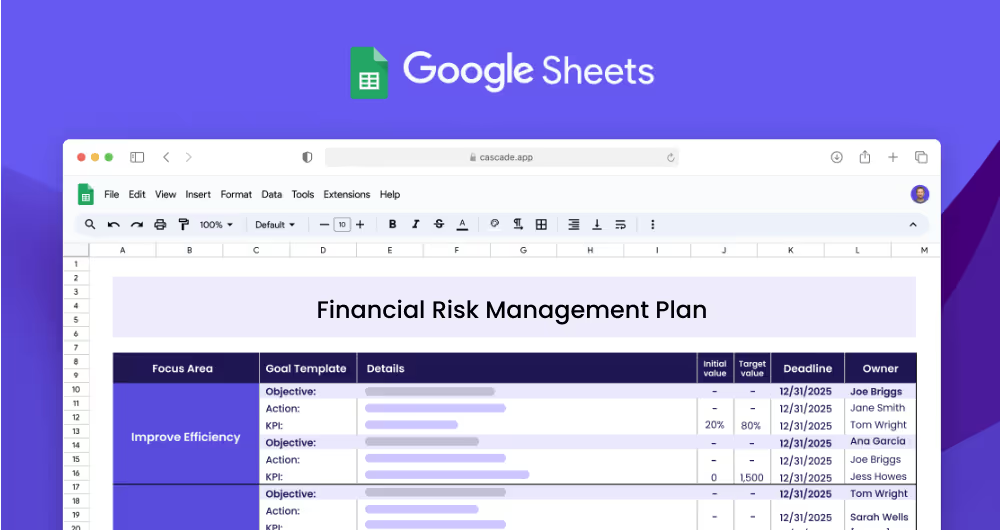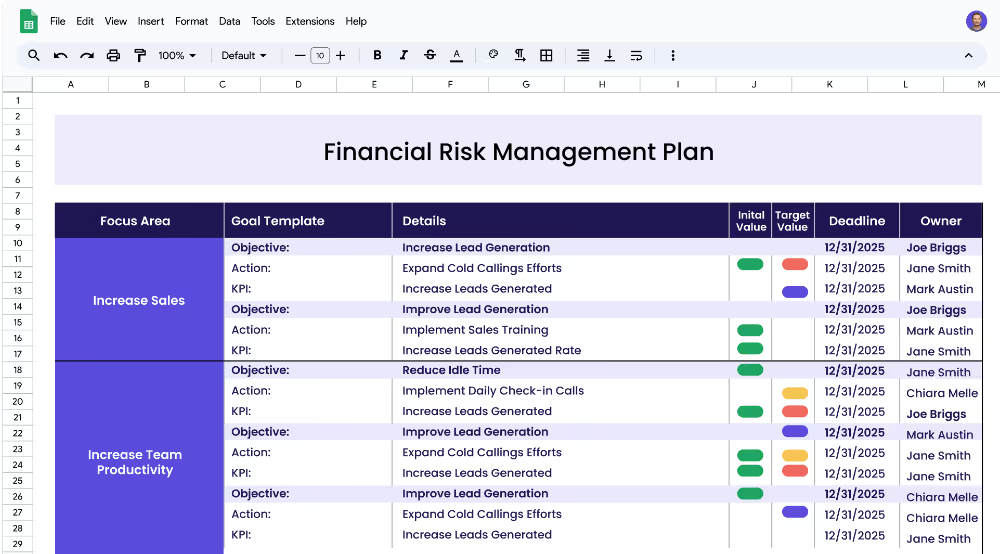A Financial Risk Management Plan outlines the objectives, and actions that an organization should take to minimize the financial risk it is exposed to. It should identify potential risks, analyze their impact, and suggest ways to mitigate possible losses. Additionally, it should provide guidelines on how to monitor and manage financial risk on an ongoing basis.
Each focus area has its own objectives, projects, and KPIs to ensure that the strategy is comprehensive and effective.
The Financial Risk Management Plan Template is designed to help financial teams of all sizes and industries to create a plan to manage financial risks. This template will provide guidance for identifying areas of risk, setting objectives and goals, and implementing projects and initiatives to reduce or eliminate financial risks.
Focus areas are the main topics or categories that your Financial Risk Management Plan will cover. Examples of focus areas can include financial reporting, financial analysis, liquidity management, and capital management. In each focus area, it is important to identify the key objectives and goals that need to be achieved.
Objectives are the specific outcomes that need to be achieved in each focus area. These should be measurable, achievable, and realistic goals. Examples of objectives include reducing risk exposure, mitigating financial risk, enhancing financial transparency, and increasing insight into financial performance.
KPIs, or key performance indicators, are measurable targets that can be used to track progress towards the objectives. These should be specific and achievable targets that can be monitored over time. Examples of KPIs include increasing risk factor awareness, increasing risk mitigation strategies, increasing financial reporting frequency, and increasing number of quality reviews.
Projects, or actions, are the steps that need to be taken in order to achieve the KPIs. These should be detailed, actionable steps that are necessary to reach the desired outcomes. Examples of projects include identifying and monitoring risk factors, implementing risk mitigation strategies, reporting financial performance, and improving financial statement quality.
If you’re aiming for more effective and faster results in managing financial risk, Cascade Strategy Execution Software could be your key resource. It offers robust tools and features that surpass the functionality of traditional spreadsheets, enabling real-time updates, centralized collaboration, and automated reporting. These capabilities ensure that your strategy stays agile and aligned, providing enhanced visibility through its visual dashboards that integrate planning and execution seamlessly. Sign-up for free or book a demo with one of our strategy experts to begin optimizing your strategic management today!


